Spider-Man: No Way Home Movie Review
The third film tends to be tough for Spider-Man. The third Sam Raimi film suffered from competing priorities between filmmaker and producers, resulting in multiple entries worth of story being crammed into one movie. The third Marc Webb Spider-Man topped that by never even happening after making the same mistake as the Raimi series, just doing it faster.
Now it’s time for the Jon Watts version to attempt the same thing because in some parts of the world doing the same failed thing over and over again regardless of result doesn’t mean you’re crazy, it just means you haven’t succeeded yet. So which is Spider-Man: No Way Home? The short version is, whatever you think it is, it pretty much is.
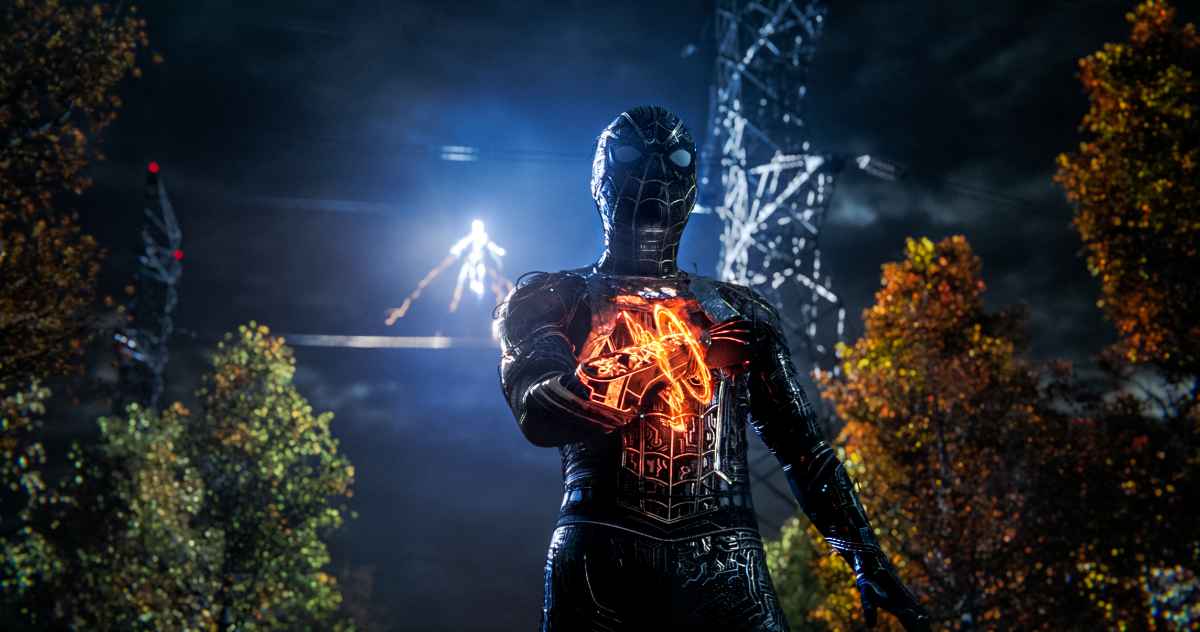
The longer version is… longer. It is, like previous attempts at gathering a coterie of Spider-Man villains for a single epic showdown, overstuffed and attempting to duct tape over story cracks with melodrama. It relies on its audience having a decent knowledge of not just all of the Tom Holland Spider-Man films but all the ones that came before him, relying on nostalgia in place of deepening characterization or complex protagonist/antagonist relationships.
Also, it continues to define Spider-Man as the most naïve superhero in the world, but that at least is on brand.
There are differences to the previous Spider-Men, as much as there are similarities, and if No Way Home has any guiding light, it’s in examining those contrasts between the various iterations. It’s a good idea, so good I have a vague feeling someone has done it before…. Oh well, if nostalgia tells us anything, it’s that any idea good enough to be done once is good enough to be done twice. Or even three times.
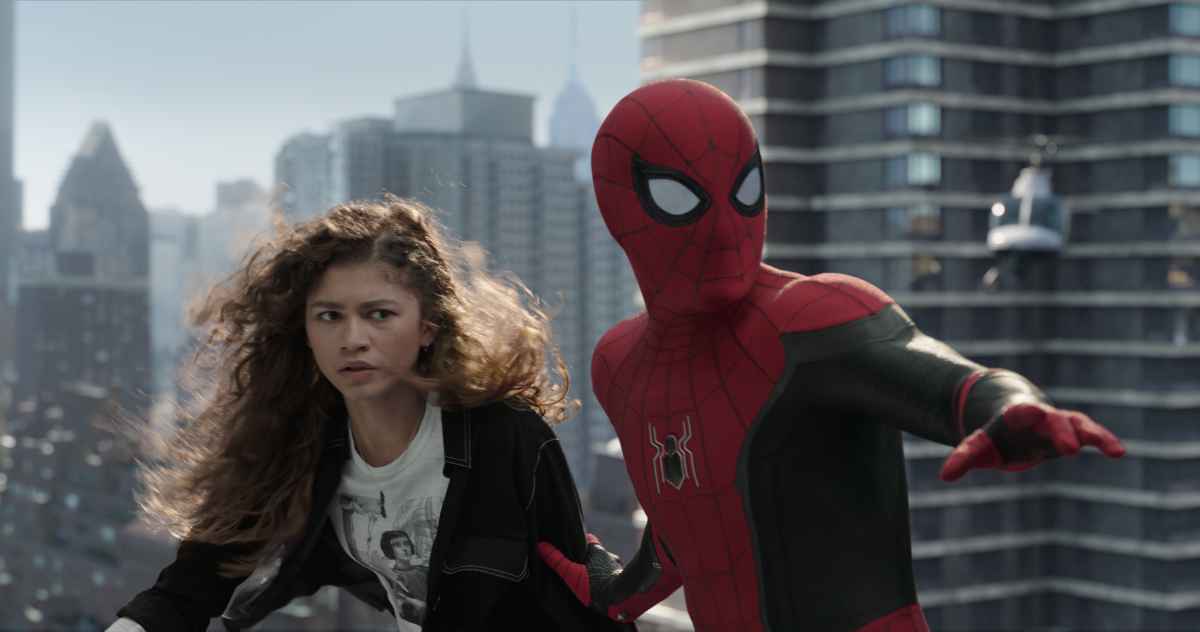
And the idea at the heart of Spider-Man: No Way Home is a good one. Peter Parker’s secret identity was outed by Mysterio in one final bit of spite, and it has turned his life upside down. (The fact this has no similar effect on any of the Avengers or other characters who never bothered with secret identities is best left ignored).
In an attempt to fix things, Peter turns to Doctor Strange (Benedict Cumberbatch) to erase the memory of his identity from everyone, but when the spell goes awry, instead of hiding Peter, it exposes him to every villain Spider-Man has ever had from every reality including the Green Goblin (Willem Dafoe), Doctor Octopus (Alfred Molina) and Electro (Jamie Foxx).
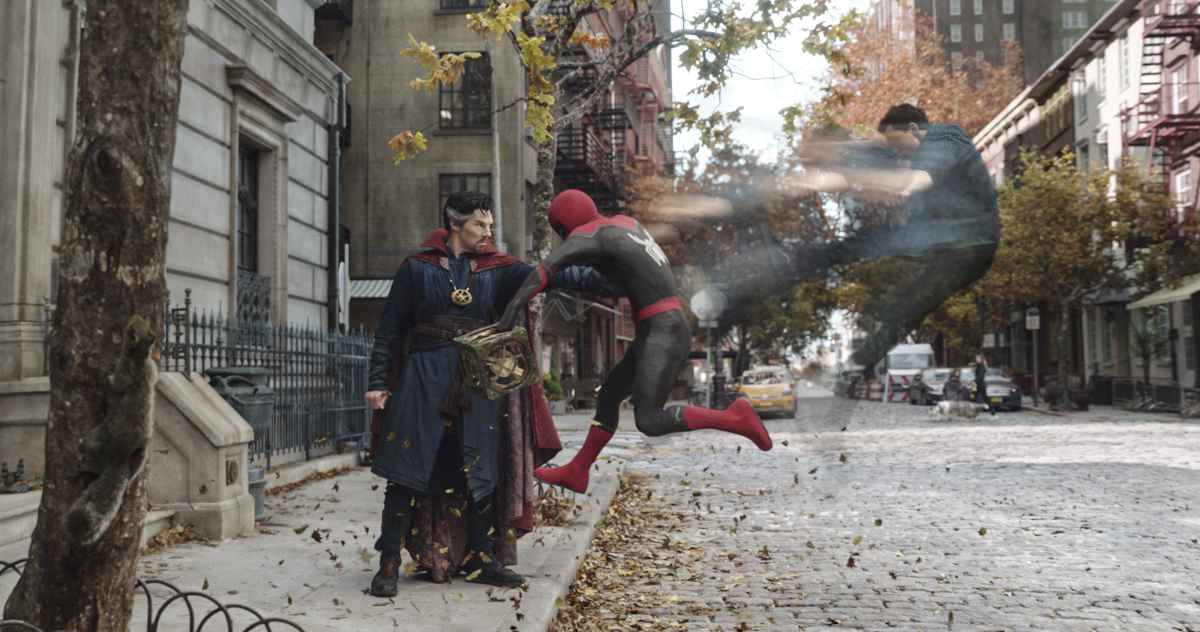
On the run from the police and from an angry Sorcerer Supreme, it’s up to Peter to both capture these old/new foes and cure them of their afflictions to ensure they don’t die in their home realities. But when his plans backfire on him (again), and he faces unimaginable tragedy, the real question becomes whether Peter will become the killer everyone has accused him of being.
That is both a lot and nowhere near as much as has been stuffed into No Way Home, which tries to continue building the key relationships the series has been built on – with his girlfriend MJ (Zendaya), his best friend Ned (Jacob Batalon), his Aunt May (Marisa Tomei) and Stark surrogate Happy Hogan (Jon Favreau) – and develop new ones.
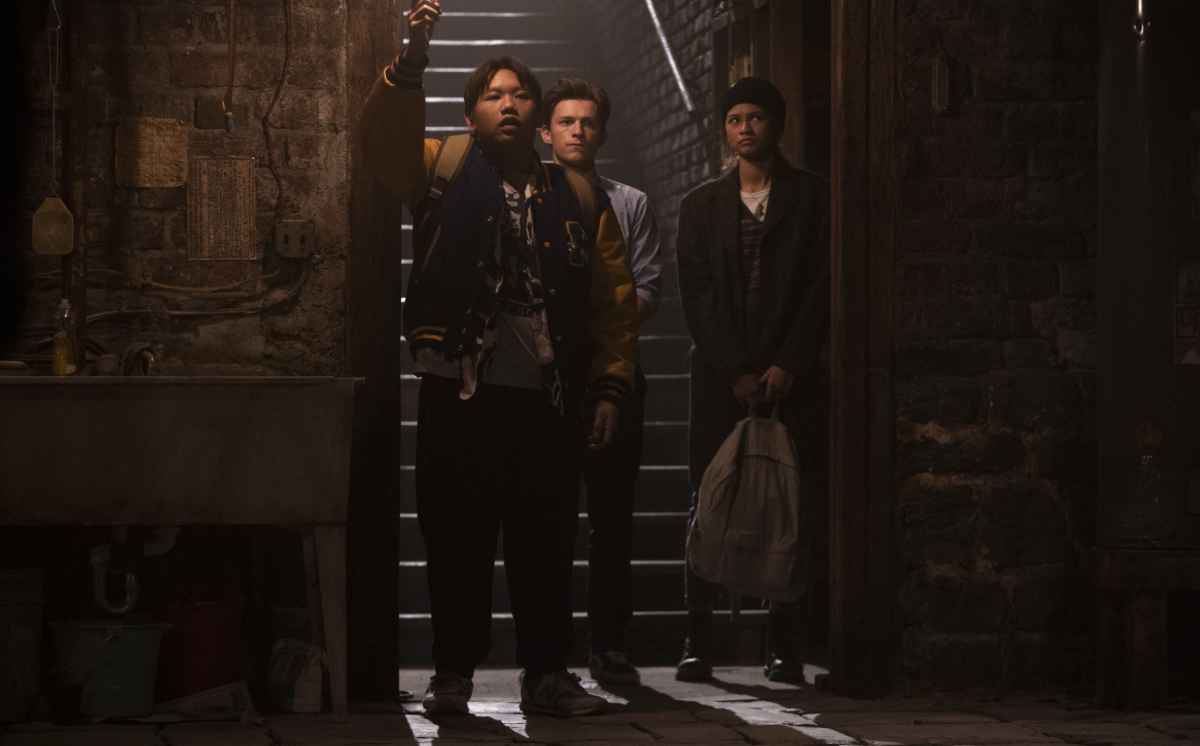
Peter remains as ever in search of a superhero mentor, turning this time to Stephen Strange while also creating connections with the new villains dropped on top of him. And that’s where No Way Home starts and piles on to from there. Something must suffer with that much going on, and coherence tends to be the big victim.
No Way Home is even more episodic than Far From Home was, bouncing from set piece to home life to school drama and back again. More importantly, it feels more episodic (and not always in a good way) as the introduction of Doctor Strange allows the filmmakers to focus entirely on scenes and ignore connective tissue with the handwave of ‘a wizard did it.’
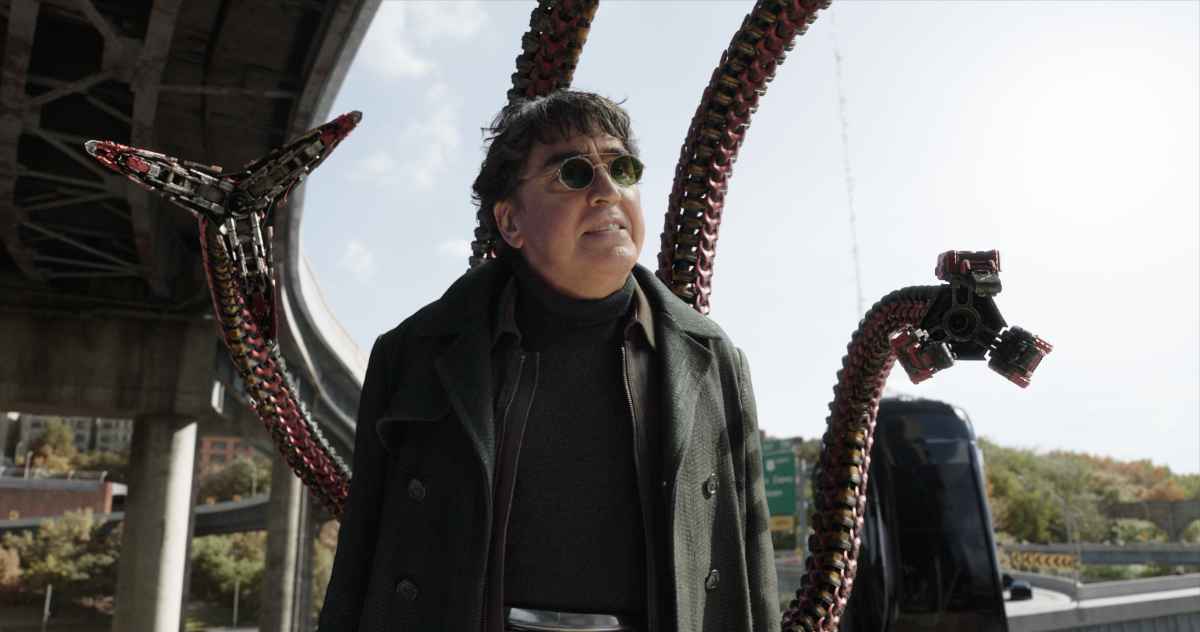
Where did the villains come from? A wizard did it. How will Peter send them back? A wizard will do it. Why did the Sandman initially help Peter and then turn against him? A wizard… didn’t have much to do with that one, and hopefully, you won’t notice too much as it’s busy zipping to the next thing. No Way Home can rest on its laurels this way because the things this Spider series has done well, it has done very well. And continues to do well.
Tom Holland remains the most endearing Peter/Spider-Man in a way Tobey Maguire and Andrew Garfield never quite managed, and his relationships with his friends and family are the real magic that keeps the messiest of plot points connected together. Even in a film as stuffed full as No Way Home, Watts wisely makes sure to find plenty of time for May, MJ, and Ned and keeps them central to anything Peter is doing.
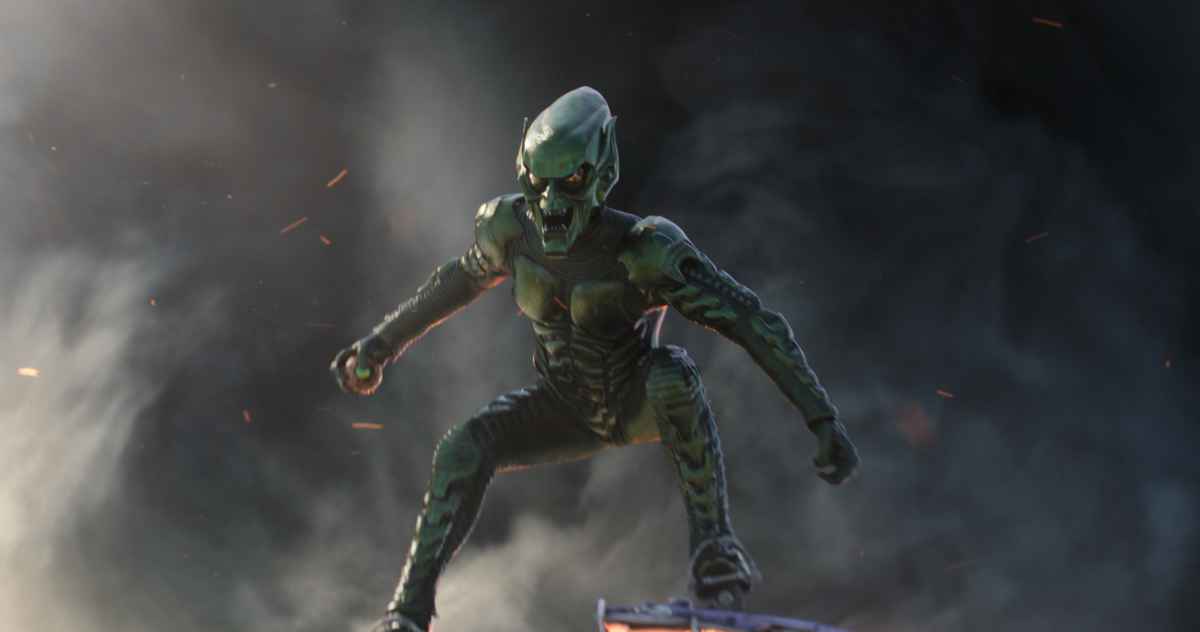
Just as wisely, Kevin Feige and the rest of the Marvel Studios trust realize that having the definitive version of some of Spider-Man’s best villains means there’s nothing to be gained in creating new versions of them. It’s a particular testament to Dafoe and Molina’s (and Raimi’s) conception of these characters that they slot into this new Spider-Man’s life without missing a beat.
Or, in Electro’s case, he is given some of the gravitas that was lacking in his original variation. Watching Spider-Man take all of these villains on in battle royale is worth sitting through a lot of dead time; just don’t spend too much time trying to figure out what they want.
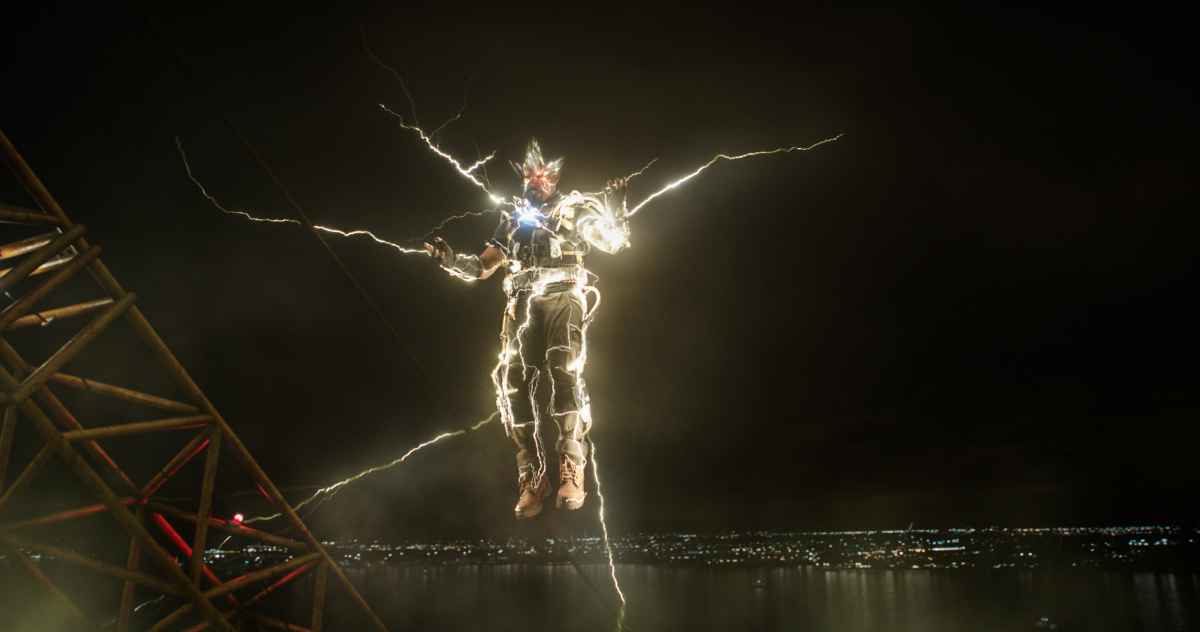
And there is a lot of dead time sneaking up on the viewer. It is, again, easy to see how it arrived; at the moment, stopping such a full story for hijinks with Ned’s grandmother is the kind of light, charming fun a Spider-Man movie is supposed to be. It’s only outside of the moment that it becomes easy to wonder how much of that was necessary.
The genuine hope is that the general emotion of the new and old character interactions will be enough to cover up the patchwork nature of the story. None of that is by accident. It’s impossible to accuse a film that includes a line like “I wish I’d never fallen into that vat of electric eels” of not having any self-awareness.
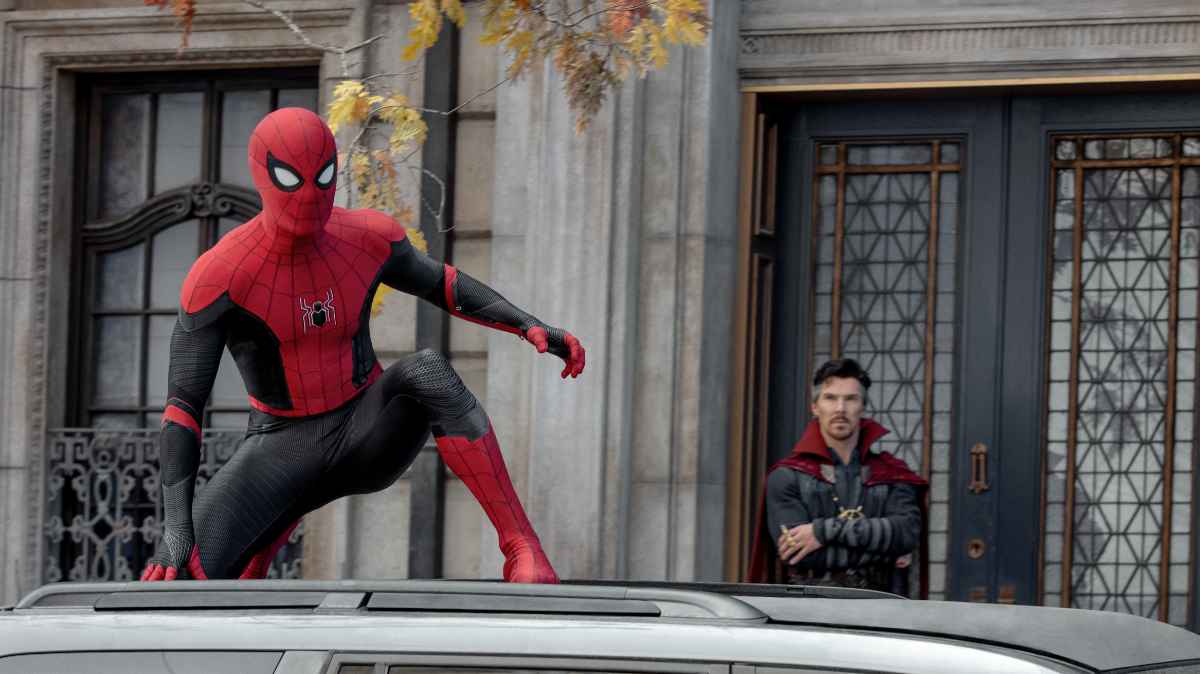
It is, by default, the best of the Spider-Man trilogy cappers, but it still can’t get away from the desire to offer everything and the kitchen sink despite all the proof that it is more of a negative than a positive. No Way Home mostly pulls it off, but that shouldn’t be an endorsement for this kind of filmmaking.
It remains a strange irony that one of the most iconic superhero characters of all time remains saddled with so much extra baggage when transferred to film rather than letting him rely on what has historically worked. Watts and co. have learned some of the lessons of the other Spider-Men, but not all of them. Unlike those prior iterations, there is more evidence than ever that there will be more episodes of this particular friendly neighborhood Spider-Man, so maybe the next chapter will do better.
SPIDER-MAN: NO WAY HOME REVIEW SCORE: 6.5 OUT OF 10
Sony Pictures‘ Spider-Man: No Way Home is rated PG-13 for sequences of action/violence, some language, and brief suggestive comments.
